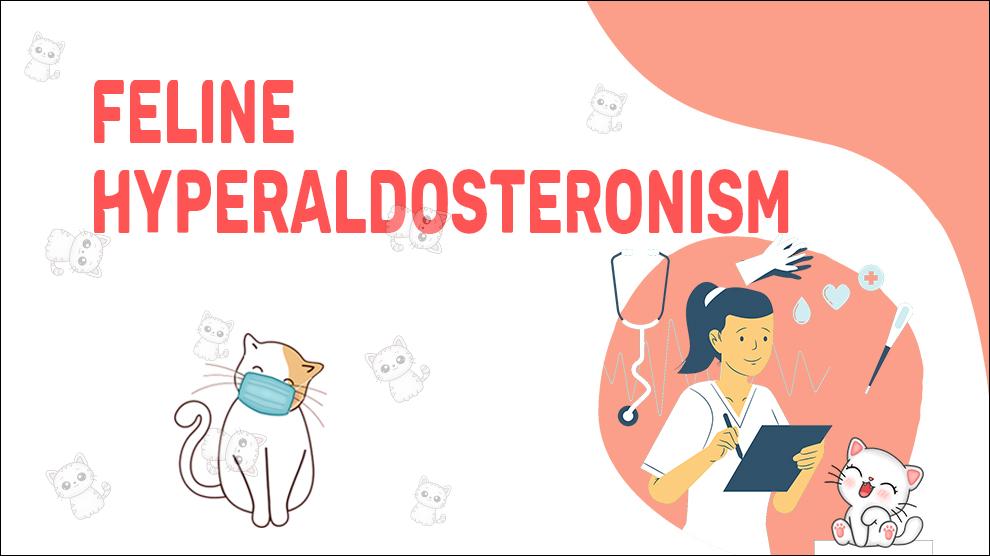What Is Feline Hyperaldosteronism?
Feline hyperaldosteronism is a hormonal disorder that affects cats.
It is caused by an overproduction of aldosterone, which can lead to a range of symptoms, including increased thirst and urination, weakness, and muscle wasting.
The condition is diagnosed through blood and urine tests and can be treated with medications or surgery.
Preventive measures include regular veterinary check-ups and monitoring of electrolyte levels.
Clinical Signs Of Feline Hyperaldosteronism
The symptoms of feline hyperaldosteronism can vary depending on the severity of the condition.
Some common symptoms of the disorder may include:
- Increased thirst and urination: Cats with hyperaldosteronism may drink and urinate excessively.
- Weakness and lethargy: Cats may appear weak and lethargic due to muscle wasting.
- Muscle wasting: Excess aldosterone can cause muscle wasting, which can result in weight loss and weakness.
- High blood pressure: Hyperaldosteronism can cause high blood pressure in some cats.
- Heart problems: If left untreated, hyperaldosteronism can cause heart problems, including heart failure.
- Weakening Of Muscles
- Collapse
- Lack Of Appetite
- Bumping Into Things
Treatment Options For Feline Hyperaldosteronism
The treatment for feline hyperaldosteronism will depend on the underlying cause of the condition.
Some common treatments for hyperaldosteronism may include:
- Medications: Medications such as spironolactone or eplerenone may be prescribed to block the effects of aldosterone and reduce the symptoms of hyperaldosteronism.
- Surgery: If the condition is caused by a tumor on the adrenal gland, surgery may be necessary to remove the tumor.
- Dietary changes: In some cases, dietary changes may be recommended to manage the symptoms of hyperaldosteronism.
- Fluid therapy: If the cat is dehydrated, fluid therapy may be necessary to restore electrolyte balance.
Home Remedies For Feline Hyperaldosteronism
While there are no home remedies for feline hyperaldosteronism, there are some things that cat owners can do to support their cat's overall health and well-being.
These may include:
- Providing a healthy diet: A diet that is rich in nutrients can help support a cat's overall health and reduce the risk of health problems.
- Regular exercise: Regular exercise can help maintain a healthy weight and reduce the risk of health problems.
- Regular check-ups: Regular veterinary check-ups can help detect early signs of hyperaldosteronism and other health problems.
How To Prevent Feline Hyperaldosteronism?
While there is no surefire way to prevent feline hyperaldosteronism, there are some preventive measures that cat owners can take to reduce the risk of the condition.
Some of these measures may include:
- Regular veterinary check-ups: Regular check-ups can help detect early signs of hyperaldosteronism and other health problems.
- Monitoring of electrolyte levels: Regular monitoring of electrolyte levels can help detect any imbalances and prevent complications.
- Proper nutrition: A healthy diet can help support a cat's overall health and reduce the risk of health problems.
Affected Cat Breeds Of Feline Hyperaldosteronism
Causes For Feline Hyperaldosteronism
Causes:
Feline hyperaldosteronism is caused by an overproduction of aldosterone, a hormone produced by the adrenal glands.
The condition can be classified as either primary or secondary hyperaldosteronism.
Primary hyperaldosteronism is caused by a tumor on one or both adrenal glands, which can lead to an overproduction of aldosterone.
Secondary hyperaldosteronism can be caused by a variety of factors, including kidney disease, heart disease, and liver disease.
When To See A Vet For Feline Hyperaldosteronism?
If you suspect that your cat may have hyperaldosteronism, it is important to contact your veterinarian immediately.
Early detection and treatment are critical for managing the condition and reducing the risk of complications.
You should also contact your veterinarian if your cat is experiencing any of the following symptoms:
- Increased thirst and urination
- Weakness and lethargy
- Muscle wasting
- High blood pressure
Food Suggestions For Feline Hyperaldosteronism
There are no specific dietary recommendations for cats with hyperaldosteronism.
However, a healthy, balanced diet can help support a cat's overall health and reduce the risk of health problems.
Some general tips for feeding a cat include:
- Providing a diet that is rich in protein and nutrients.
- Avoiding foods that are high in fat and calories.
- Providing fresh, clean water at all times.
Conclusion
Feline hyperaldosteronism is a rare but serious hormonal disorder that can affect cats.
The condition is caused by an overproduction of aldosterone, which can lead to a range of symptoms, including increased thirst and urination, weakness, and muscle wasting.
While there is no surefire way to prevent hyperaldosteronism, regular veterinary check-ups and monitoring of electrolyte levels can help detect the condition early and prevent complications.
Treatment options may include medications, surgery, dietary changes, and fluid therapy.
By taking preventative measures and seeking early treatment, cat owners can help manage the symptoms of hyperaldosteronism and improve their cat's overall health and well-being.











